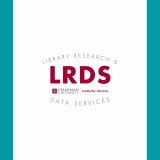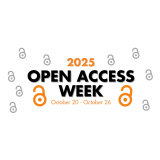Chapman University’s Collection of Russian Icons Gets a Digital Makeover
August 27, 2018
A Virtual Exhibition for Chapman University’s Collection of Russian Icons
Patrons will now be able to explore Chapman University’s extraordinary collection of Russian Icons and learn more about the Russian icon tradition through a new, virtual exhibition created by Jessica Bocinski ’18 and Dr. Wendy Salmond. This website, powered by Omeka.net (a digital collections open source content management system), expands upon the icons’ current display on the fourth floor of the Leatherby Libraries. It was created with the goal of providing an easily accessible guide to understanding Russian icons and their enduring significance. Access the website here: chapmanrussianicons.omeka.net
What are Icons?
Icons—religious images typically painted on wooden boards or embossed on metal surfaces—are perhaps the most readily recognizable symbols of the Eastern Orthodox faith. As windows onto heaven, icons offer a direct connection to God, and, therefore, the promise of divine protection, intersession, and assurance. No Orthodox believer, regardless of wealth or status, goes without such a powerful spiritual conduit. Icons have adorned the walls of churches, rested on the shelves of homes, and hung from the necks of believers for centuries. Throughout this long, prolific history, icons adopted multiple layers of symbolic meaning that became intertwined with the religious, cultural, and political identity of Russia.
Chapman University’s Collection of Russian Icons
This collection represents the variety of materials, subjects, and formats that constitute the Russian icon tradition. Mostly originating from the 19th and 20th centuries, these icons capture the complex intersection of new and old, the meeting of modern life and age-old tradition. Although appearing in a variety of media and sizes, the revered images of Christ, the Mother of God, and the saints continue to look out at us as they have for thousands of years.
Beneath this seemingly immovable gaze there are often concealed dynamic personal stories which betray the tumultuous reality of late Imperial Russia. With the goal of completely reconstructing Russian life, the early Bolshevik regime championed the elimination of religion through the destruction of religious imagery. Only by enduring a labyrinth of circumstances each of these icons have survived to become a part of Chapman University’s Art Collections.
Chapman University’s collection of Russian Icons was generously donated by the late Mrs. Evelyn LaLanne of Laguna Beach in 1990. As a former high school teacher, Mrs. LaLanne was passionate about education and shared her collection with the wish that others might learn from these remarkable images.





